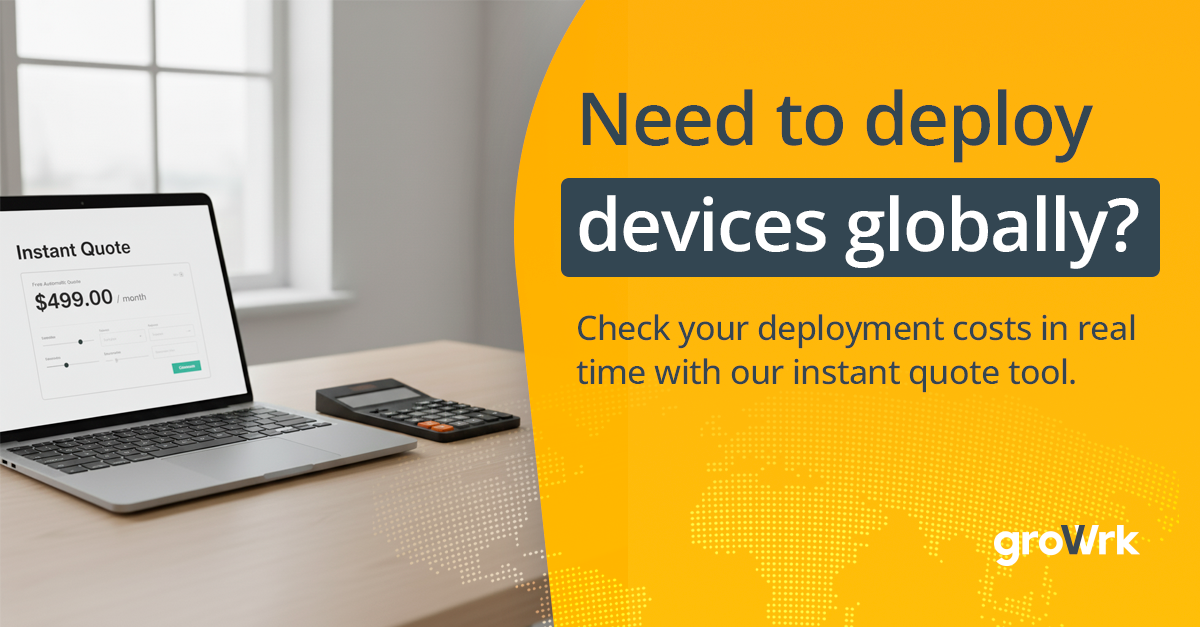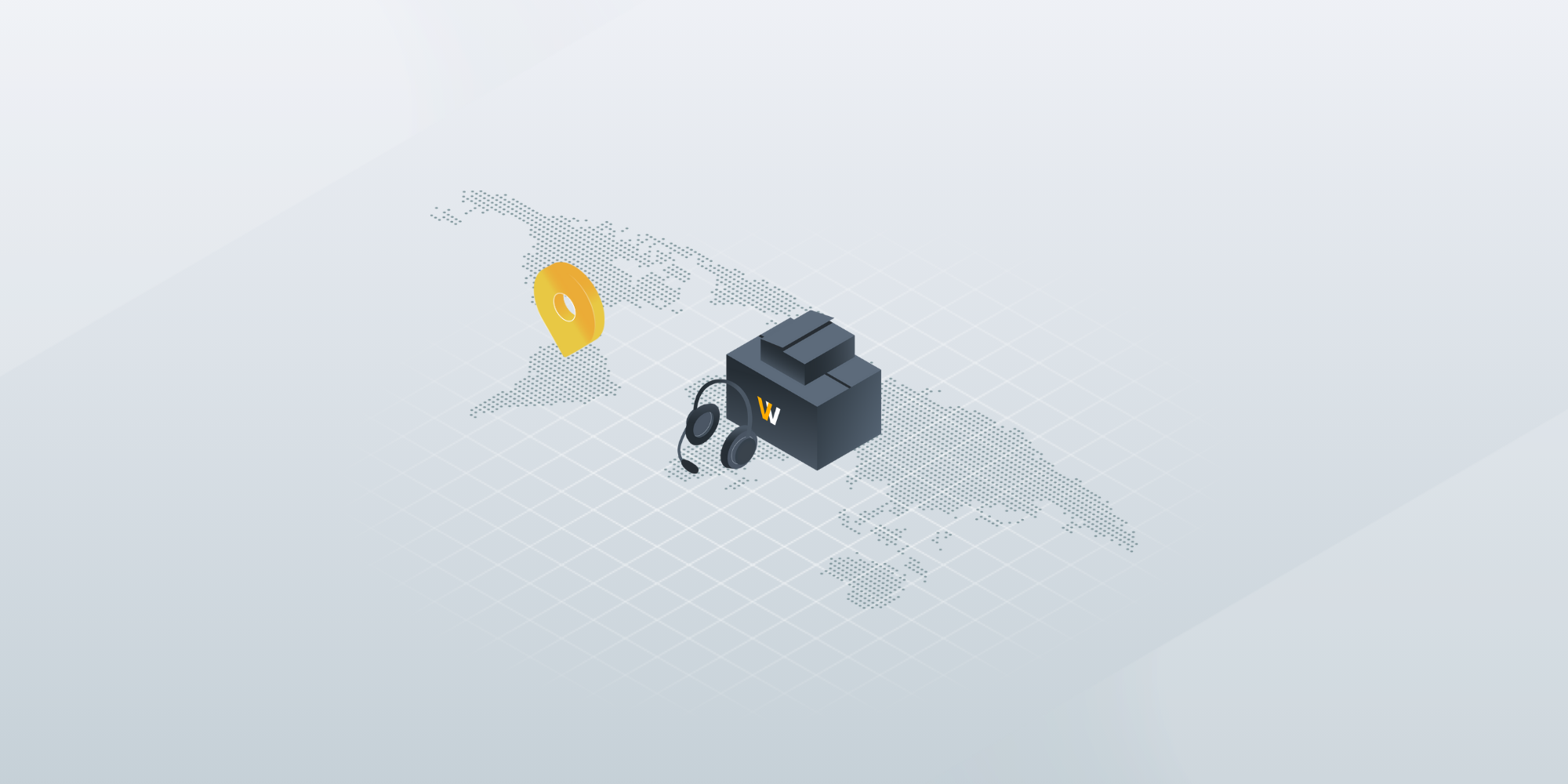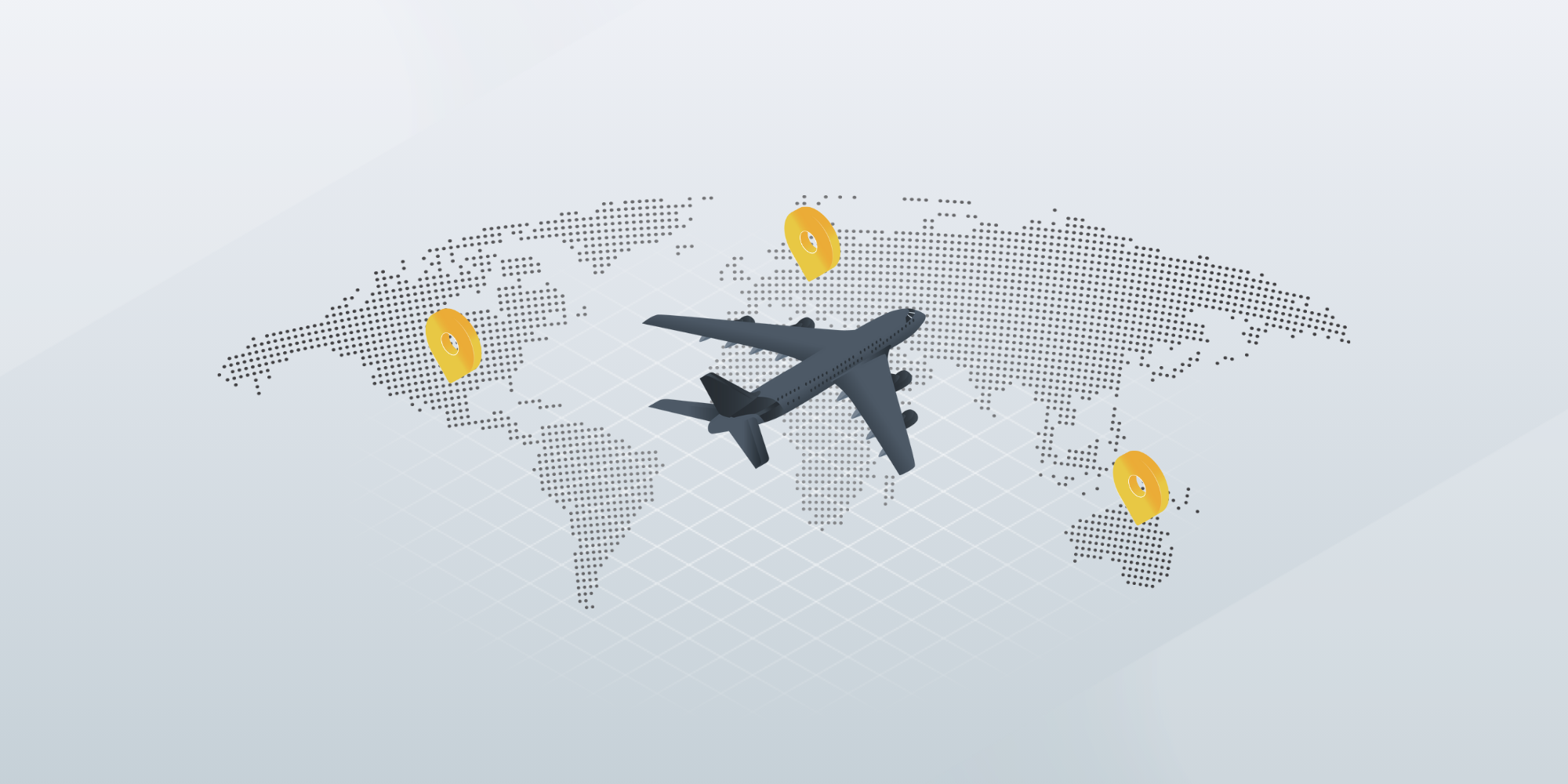International Procurement Process: A Modern Framework
 GroWrk Team
GroWrk Team
The procurement software market was valued at USD 5.5 billion in 2020 and is projected to reach USD 9.5 billion by 2028, growing at a compound annual growth rate (CAGR) of 7.6%, according to Verified Market Research. This rapid growth highlights the critical role of international IT procurement as businesses strive to stay competitive in a globalized economy.
By sourcing goods and services from suppliers worldwide, companies can access a broader range of products, reduce costs, and explore new markets. However, managing international procurement involves handling complexities such as regulatory compliance, logistics, and supplier relationships.
Advanced procurement software is essential for overcoming challenges by facilitating IT vendor management, streamlining operations, enhancing supplier performance, and ensuring compliance. These end-to-end solutions automate manual tasks and provide valuable data insights for businesses to make informed decisions. However, they also face challenges related to compliance, logistics, and supplier management.
This article will explore the key steps and best practices to manage international procurement effectively.
Key takeaways
-
International procurement involves sourcing goods and services from multiple countries, requiring a structured process for efficiency and compliance.
-
Key steps include identifying needs, selecting suppliers, negotiating contracts, and monitoring processes to ensure effective procurement management.
-
Challenges such as regulatory compliance, logistics, and cultural barriers necessitate strategic practices like building supplier relationships and leveraging technology to optimize procurement outcomes.
What is International Procurement?
-1.png?width=600&height=300&name=In-blog%20image%20template%20(1)-1.png)
International or global procurement refers to obtaining goods and services across international borders. Unlike domestic procurement, which deals with suppliers within a single country, international procurement operates on a much larger scale involving multiple countries and regions.
This complexity requires a structured procurement process that includes sourcing raw materials for direct and indirect procurement and efficiently acquiring and paying for goods and services.
Benefits of International Procurement
-
Cost savings: By sourcing from regions with lower production costs, companies can significantly reduce expenses.
-
Business efficiency: Accessing global suppliers can minimize waste and streamline operations, leading to greater efficiency.
-
Expanded market reach: International procurement enables businesses to enter new markets and access a broader range of products.
-
Quality access: Companies can source higher-quality materials or unique products unavailable locally.
-
Raw materials: Sourcing internationally is crucial for manufacturing tangible products. It directly impacts production costs and operational efficiency, making it a key factor in the procurement process.
Get an instant quote
International Procurement process in 9 steps
Procurement is a key business function involving the sourcing, purchasing, and inspecting of goods and services essential for operations. For tech acquisitions, the IT asset management process ensures full lifecycle control and optimization.

A typical procurement process flow includes the following stages:
1. Needs recognition:
The journey begins with identifying the organization's need for goods or services. This step involves understanding the specific requirements and ensuring they align with the organization’s strategic goals.
2. Purchase requisition:
Once the need is identified, a formal purchase request is submitted to the procurement team. This request includes detailed specifications and quantities required, ensuring that the procurement team has all the necessary information to proceed.
3. Supplier selection:
Evaluating and selecting suppliers is a critical step. The competitive bidding process is crucial, as it helps organizations compare proposals and choose the most suitable suppliers. Suppliers are assessed based on various factors such as price, quality, delivery time, and reliability. This ensures that the organization partners with the best possible suppliers.
4. Contract negotiation:
After selecting a supplier, the next step is negotiating terms and conditions. This involves discussing pricing, delivery schedules, payment terms, and other contractual details to ensure a mutually beneficial agreement.
5. Purchase order:
Once terms are agreed upon, a purchase order is issued to the supplier. This document outlines the specific goods or services required, quantities, and agreed-upon terms, serving as a formal agreement between the parties.
6. Goods receipt:
The goods or services are received and inspected upon delivery to ensure they meet the specified requirements. This step is crucial for quality control and verifying that the order is complete and accurate.
7. Invoice processing:
The supplier’s invoice is then processed and verified for accuracy. This involves matching the invoice with the purchase order and goods receipt to ensure consistency and correctness.
8. Payment:
Payment is made to the supplier, either manually or automatically. Timely and accurate payment is essential for maintaining good supplier relationships.
9. Record-keeping:
Finally, all records related to the procurement process, including purchase requests, contracts, and invoices, are maintained for auditing and future reference. Proper documentation ensures transparency and accountability.
By following this procurement process flow, organizations can ensure that they are acquiring the necessary goods and services in a timely and cost-effective way. This structured approach enhances operational efficiency, maintains strong supplier relationships, and ensures compliance with procurement practices and regulations.
Challenges in International Procurement
-1.png?width=600&height=300&name=In-blog%20image%20template%20(2)-1.png)
International procurement comes with its own set of challenges that require using IT vendor management best practices to navigate.
Geopolitical risks
Geopolitical instability, such as trade disputes or political unrest, can disrupt international procurement processes. These risks can lead to supply chain interruptions, sudden tariff changes, or sanctions impacting sourcing and delivery timelines. Staying updated on geopolitical developments and diversifying suppliers can help mitigate these risks.
Regulatory compliance
Navigating different legal frameworks and trade regulations across countries is a complex challenge in international procurement. Customs requirements, product standards, and certification demands vary widely, requiring procurement teams to stay informed to avoid penalties. Collaborating with local agents can simplify compliance and streamline customs processes.
Communication challenges
Effective communication is vital in international procurement, but time zone differences, language barriers, and varying communication styles can complicate operations. Misunderstandings can lead to delayed deliveries or missed specifications. Leveraging technology like translation tools and establishing clear communication protocols can bridge these gaps.
Cultural differences
Cultural norms and business etiquette vary across regions and influence negotiation tactics, decision-making processes, and relationship-building. Ignoring cultural nuances can hinder supplier relationships and procurement efficiency. Training teams in cross-cultural communication fosters better collaboration and trust with international vendors
Logistics and shipping
International logistics often involve longer lead times, customs processing, and coordination across multiple transportation modes. Developing nations may pose additional challenges with inadequate infrastructure. Strategic logistics planning, strong partnerships with freight providers, and using digital tracking tools ensure smoother deliveries.
Vendor management
Managing international vendors requires robust IT vendor management practices to address risks like inconsistent quality, delivery delays, or market changes. Maintaining strong relationships with vendors through regular evaluations and clear expectations helps mitigate risks and optimize procurement outcomes.
Optimizing procurement for international markets

Implementing procurement best practices is essential for risk management in international procurement. Establishing suppliers as key partners fosters enduring business relationships crucial for long-term success. Let's explore more:
Leveraging technology and procurement software
Technology is crucial in modern procurement. E-procurement simplifies purchase tracking and compliance through automation, efficiently sourcing materials at optimal costs. Source-to-pay solutions manage suppliers, purchases, invoices, and contracts while automating workflows. These tools streamline processes, reduce errors, and boost productivity by integrating with other systems to enhance
Streamlining processes
Processes can be streamlined through various means, including:
-
Automation: Implementing procurement software to automate purchase order creation, invoice processing, and payment tasks. Automation reduces manual effort, minimizes errors, and speeds up the procurement cycle.
-
Standardization: Establishing standardized processes and templates to reduce variability and increase consistency. Standardization ensures that all procurement activities follow a uniform approach, enhancing efficiency and compliance.
-
Centralization: Consolidating procurement activities into a single department or team to improve coordination and control. Centralization allows for better oversight, streamlined communication, and more effective management of the procurement process.
-
Supplier Rationalization: Reducing the number of suppliers to simplify relationships and improve negotiation power. Organizations can achieve better terms and stronger partnerships by working with a smaller, more strategic group of suppliers.
-
Process Re-engineering: Involves analyzing and redesigning procurement processes to eliminate unnecessary steps and improve efficiency. This involves critically evaluating current processes and making changes to enhance overall performance.
Organizations can achieve significant cost savings, improve supplier relationships, and enhance overall procurement performance by streamlining the procurement process.
Building strong supplier relationships
Building strong supplier relationships is a cornerstone of effective procurement. Cultural misunderstandings can lead to significant operational issues, such as incorrect shipments and strained relationships. Awareness of cultural norms can foster successful partnerships in international procurement.
Feedback mechanisms are essential to foster continuous improvement and mutual understanding in supplier relationships. Diversifying suppliers and customers across various regions can also minimize the impact of localized disruptions.
Managing supplier performance
Managing multiple procurement services requires data, so you must track their performance to ensure they meet the organization’s expectations. This includes:
-
Setting performance metrics: Establishing clear performance metrics, such as delivery time, quality, and price. These metrics provide a benchmark for evaluating supplier performance and ensuring they meet the organization’s standards.
-
Monitoring performance: Regularly monitoring supplier performance against established metrics. This involves tracking key performance indicators (KPIs) and identifying any areas of concern.
-
Providing feedback: Providing constructive feedback to suppliers to improve their performance. Open communication and regular feedback help suppliers understand expectations and make necessary improvements.
-
Conducting audits: Regular audits ensure suppliers comply with organizational policies and procedures. Audits help identify compliance issues and ensure suppliers adhere to agreed-upon standards.
-
Developing corrective action plans: Develop procurement plans to address performance issues or deficiencies. This involves working with suppliers to identify root causes and implement corrective actions to improve performance.
Negotiation strategies in International Procurement
-1.png?width=600&height=300&name=In-blog%20image%20template%20(3)-1.png)
Effective negotiation is a cornerstone of the procurement process, enabling organizations to secure suppliers' best terms and conditions. Here are some negotiation strategies that procurement teams can employ to enhance their outcomes:
-
Separate the people from the problem: Focus on the issue rather than making personal attacks or taking things personally. This approach helps maintain a professional and objective stance during negotiations.
-
Focus on interests, not positions: Seek to understand the supplier's underlying interests and needs rather than just their stated position. This can lead to more creative and mutually beneficial solutions.
-
Use objective criteria: Use data and market research to support your negotiation position rather than relying on subjective opinions or emotions. Objective criteria provide a solid foundation for your arguments and help you reach a fair agreement.
-
Make a strong first offer: Instead of starting with a weak or tentative offer, make a strong initial offer that sets the tone for the negotiation. A well-researched and confident first offer can anchor the negotiation in your favor.
-
Look for mutual benefits: Seek solutions that benefit both parties rather than just focusing on your interests. Collaborative solutions can lead to stronger supplier relationships and long-term partnerships.
-
Use time to your advantage: Use time to your advantage by delaying or accelerating the negotiation process, depending on your goals and objectives. Time management can be a strategic tool in negotiations.
-
Be transparent and honest: Be transparent and sincere in your negotiation approach rather than using deception or manipulation to get what you want. Honesty builds trust and fosters a positive relationship with suppliers.
-
Be willing to walk away: Rather than accepting a bad deal, be willing to leave the negotiation if the terms and conditions are unsatisfactory. Knowing your limits and having alternatives can strengthen your negotiating position.
Domestic vs. International Procurement
![]()
Legal Frameworks and Compliance
Domestic procurement works within a single legal system, making processes straightforward. International procurement, however, involves multiple legal frameworks, each with its regulations and compliance requirements. IT managers must address varying contract terms, dispute resolution methods, and cross-border obligations. Navigating these complexities often requires legal expertise and careful coordination.
Public procurement standards
Public procurement domestically follows familiar, standardized procedures set by local or national governments. In contrast, international procurement involves navigating foreign government regulations, which can be less transparent and more complex. Thorough research and the assistance of local experts are often needed to meet these standards and avoid delays.
Expertise and workforce needs
International procurement demands specialized skills in global trade laws, currency risks, and market dynamics. IT managers also need to overcome language barriers and cultural differences. Building a knowledgeable workforce or hiring international procurement consultants is crucial. Training teams in cross-cultural communication and trade regulations can further enhance efficiency.
International trade and payment complexities
Global sourcing adds challenges like managing letters of credit, international wire transfers, and trade financing. Currency fluctuations can also affect procurement costs. IT managers must establish clear payment terms and use hedging strategies to reduce financial risks while ensuring secure transactions.
Import duties and certifications
Domestic procurement avoids import duties and certifications, but international procurement requires compliance with tariffs and customs regulations. IT managers must account for these costs and verify that goods meet local certification standards like CE marking in Europe or FCC compliance in the U.S. Proper planning ensures smooth importation and avoids legal complications.
Why businesses choose GroWrk for International Procurement

Managing IT procurement globally is no small feat. It requires navigating complex logistical, regulatory, and cultural challenges while maintaining operational efficiency. GroWrk is designed to simplify these processes, helping businesses overcome obstacles and streamline their international IT procurement efforts.
With coverage in over 150 countries, GroWrk simplifies logistics by ensuring compliance with local regulations. The end-to-end platform integrates procurement, deployment, retrieval, and disposal into one cohesive solution, offering businesses an efficient way to manage distributed teams. Its flexible pricing models allow organizations to adapt quickly to workforce changes, saving time and reducing costs.
By choosing GroWrk, businesses can transform their international procurement process into a streamlined, cost-effective strategy, ensuring global operations run smoothly while focusing on growth and innovation.
Discover how GroWrk can simplify your international procurement process—schedule a demo today to see it in action!
Frequently asked questions
What are the key steps in the international procurement process?
The key steps in the international procurement process are identifying needs and requirements, selecting and evaluating suppliers, and negotiating terms and contracts. Each step is crucial for ensuring a successful procurement outcome.
What are common challenges in international procurement?
Common challenges in international procurement encompass regulatory compliance, logistics and shipping issues, and cultural and language barriers. Addressing these challenges is essential for successful procurement operations.
How can technology improve procurement processes?
Technology can significantly enhance procurement process by automating workflows, streamlining operations, and improving compliance, ultimately leading to increased efficiency and reduced errors. Implementing e-procurement systems is a valuable step towards achieving these benefits.
How can businesses mitigate risks in international procurement?
To effectively mitigate risks in international procurement, businesses should establish contingency plans, foster robust stakeholder relationships, conduct regular risk assessments, and leverage technology. Implementing these strategies will enhance resilience and adaptability in a global marketplace.







